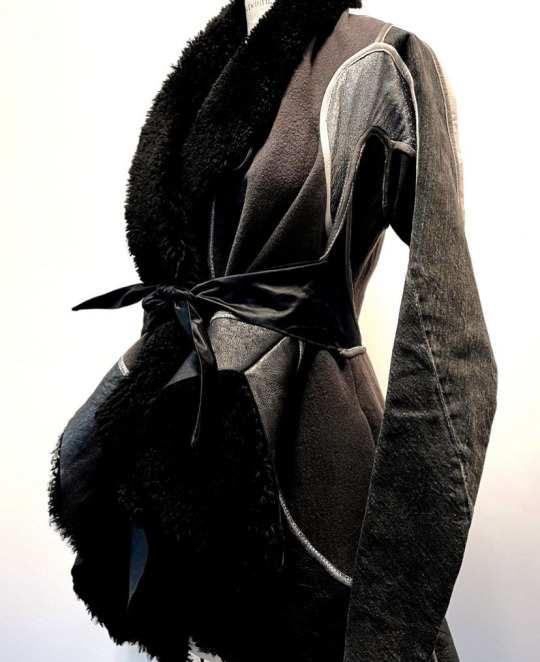#f/w 2008
Text



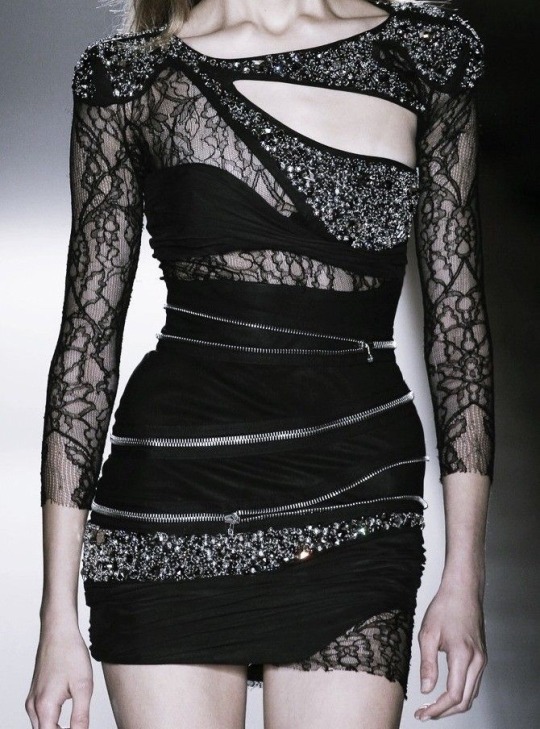
Balmain fw08
#alessandra ambrosio#vs#victoriassecret#victoria's secret#vs angel#victoria’s secret angel#balmain#ss09#spring 2009#s/s 2009#fw08#fall 2008#f/w 2008#Christophe Decarnin
60 notes
·
View notes
Text

Charles Nolan - fw08
21 notes
·
View notes
Text


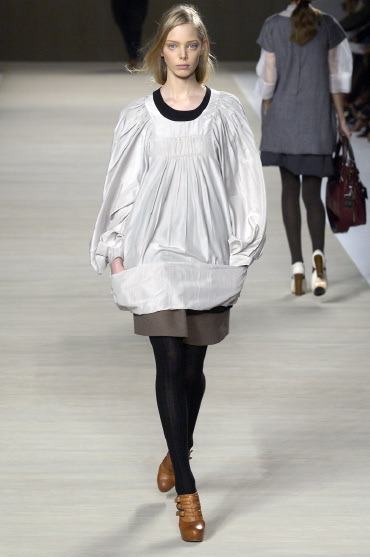







Chloe F/W 2006 is the perfect collection p. 1/2
#Chloe f/w 2006#fashion#cottagecore#forestcore#antique core#this is peak 2006 folk girl culture#we actually dressed like this in 2008-2011#bring it back!#runway#chloe
10 notes
·
View notes
Text
Some WLW (?) Jdrama & Kdrama recommendations!

Jdramas and Kdramas have a (not-entirely-unearned) reputation for being very straight, but here are a few which are either canonically F/F or which prominently feature a female-female pair-- please enjoy! For those who enjoy following series in real time, Chaser Game W and She Loves to Cook, and She Loves to Eat S2 are both airing this January 2024 :)
As with my post on anime with yuri subtext, since subtext is so subjective, this list only includes series which I’ve actually watched, and so is by no means intended to be comprehensive. Also, it doesn't include any webseries, since those probably deserve a post of their own.
At-a-glance list:
Miss Sherlock (8 episodes, 2018) (subtext)
Night Light (20 episodes, 2016) (subtext)
Tokusatsu Gagaga (7 episodes, 2019) (subtext)
Painter of the Wind (20 episodes, 2008) (canon?)
She Loves to Cook, and She Loves to Eat (10 15-minute episodes and counting, 2022~) (canon)
Sono Toki, Heart wa Nusumareta (5 episodes, 1992) (canon)
Chaser Game W (10? 30-minute episodes, 2024) (canon)
Doctor X (7 seasons and counting, 2012~) (subtext)
Bonus: SKY Castle (20 episodes, 2018) (subtext)
Summaries under the cut!
1. Miss Sherlock / ミス・シャーロック (8 episodes, 2018) (subtext) – MyDramaList | AsianWiki

The elevator pitch for this show is simple: it’s Sherlock Holmes, but where Holmes and Watson – here named “Sherlock” and Tachibana Wato, and played by Takeuchi Yuko and Kanjiya Shihori, respectively – are both female, and the cases are all set in modern Tokyo. As with other adaptations, mystery-solving and the budding relationship between the two leads takes centre stage, but Miss Sherlock manages to carve out an identity all its own.
There’s a calm beauty to its visuals, which favour sunlight and urban greenery, and the show’s focus on former doctor Wato as she tries out new jobs and goes to therapy means that there’s a surprisingly high number of slice-of-life scenes. It’s also subtly more female-focused than the source material; Sherlock’s gossipy but good-natured landlady Ms. Hatano (Ito Ran) is as much a member of the household as Sherlock and Wato, and the cases often revolve around female characters. But more than anything, it’s just really fun to watch Sherlock and Wato’s relationship bloom as they snip and snipe and are utterly unable to stay out of each other’s space (literally – the body language and blocking is *chef’s kiss*). Their relationship is the heart of the show – watch this one until the end, you won’t regret it!
(CW: psychological abuse, manipulation, and genre-typical murder, violence, and gore)
2. Night Light / 불야성 (20 episodes, 2016) (subtext) - MyDramaList | AsianWiki
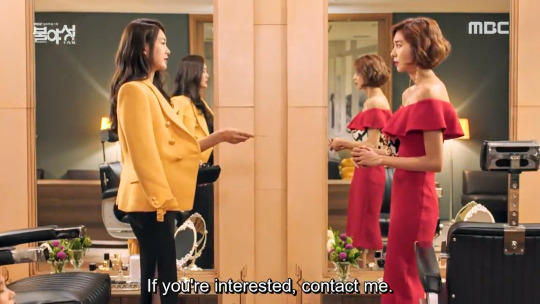
(Note: spoilers for the mid-season twist, but it’s impossible to allude to a good portion of the F/F subtext without doing so, and I think knowing the twist ahead of time doesn’t make it any less enjoyable.)
Night Light is a rather odd show. It’s simple enough on the face of it, a story about successful but ruthless CEO Seo Yi-kyung (an icy Lee Yo-won) who tries to mold the younger Lee Se-jin (a puppy-eyed Uee) in her own ambitious image, only for her protege to develop the conscience she never had and move to stop her dastardly plans… but upon watching it’s a totally different creature, thanks to the alchemic reactions of some delightfully contradictory acting choices (Uee’s performance convinces viewers less of Se-jin’s supposed latent desire for power and money, and more of a deep love and devotion for the CEO) and the unintentionally (?) inneundo-laden script (“If I like something once, I never forget it– whether it’s a dress… or a person,” declares the CEO less than ten minutes into the first episode while gazing intently at Se-jin).
Honestly, it’s a wonder this series ever got made, but you certainly won’t see me complaining! The first part is full of boss/subordinate goodness; Se-jin is unable to resist the CEO’s magnetic pull despite her hot-and-cold behaviour, while the CEO cannot bring herself to push Se-jin away completely. And then, when Se-jin makes her mind up to stop the CEO, it morphs into a corporate take on a (subtextual) lovers-on-opposite-sides situation, where it is precisely Se-jin’s feelings for the CEO that motivate her to stop her. In short, it’s a workplace GL fan’s dream.
Note: If you do watch it, skip the corporate politicking cutscenes with the old men, you’ll thank me later. Also, there’s a prominent male character who is the CEO’s ex and who works closely with Se-jin in the second half, but don’t worry, all the M/F romance is in the past (and doesn’t get much screentime)– he and Se-jin aren’t interested in each other at all.
3. Tokusatsu Gagaga / トクサツガガガ (7 episodes, 2019) (subtext) - MyDramaList | AsianWiki

Nakamura Kano (Koshiba Fuka) lives and breathes tokusatsu shows (think Power Rangers, if you’re not familiar), but keeps it a secret from her work colleagues to avoid being shunned or laughed at. And yet she yearns for connection, so when she sees a woman on the subway bearing a keychain from her favourite show (Yoshida Hisami, played by Kurashina Kana), she is determined to find her again.
Although ostensibly about being a tokusatsu fan as an adult, this show is rife with queer subtext, and not in the usual way. It deals with the difficulties of staying in the closet (regarding being an adult tokusatsu fan), the desire to connect with other queer people adult tokusatsu fans and how one might do so through hints and signals, parental disapproval arising from gendered and social expectations (that tokusatsu shows are for boys, and magical girl shows for girls), intersectionality and finding comradeship with other minorities people who are excluded due to their interests, and even generational gaps wherein younger queers fans may underestimate the obstacles that still exist. Although all that might sound a bit stressful, it isn’t actually! Difficult incidents are handled with sympathy and a dash of wry humour, and the show never loses sight of the fact that it – above all else – is a story about finding queer community in the face of a heteronormative hostile world, told with warmth and the nuance of lived experience.
4. Painter of the Wind / 바람의 화원 (20 episodes, 2008) (canon?) - MyDramaList | AsianWiki

Adapting the novel of the same name by Lee Jung-myung, Painter of the Wind takes as its protagonist a gender-bent version of real-life Joseon-era painter Shin Yun-bok (Moon Geun-young), whose paintings are used to weave a tale of artistry, political intrigue, and romance, and more than anything else to offer modern-day viewers a glimpse of everyday life in 18th-century Korea.
While it may sound like Dickinson’s boring cousin, apart from having a common preoccupation with reframing historical works, another similarity the two shows share is that Painter of the Wind is also very gay. Starting from the first episode, Yun-bok meets and becomes fascinated by the courtesan Jung-hyang (Moon Chae-won), who despite her initial aloofness is drawn to Yun-bok’s intellect and sensitive demeanour. It’s a real meeting of the minds, their witty repartee in early episodes reminiscent of Twelfth Night’s Viola and Olivia, and their relationship isn’t siloed off from the main plot either: Yun-bok’s infatuation quickly starts causing issues with her academic career, and the two eventually have to contend with Jung-hyang’s precarious position as a courtesan as well.
Unfortunately, all this is undermined in the back half of the show, which tries to gaslight viewers into thinking that Yun-bok’s feelings for Jung-hyang were purely platonic all along and that she totally has romantic feelings for her much older male mentor— but hey, at least it’s an open ending. Despite everything, though, I can’t think of another serious historical TV show which features such a prominent F/F narrative for its main character, even nearly two decades later. (Let me know if you have any others! And no, Gentleman Jack doesn’t count, it’s not exactly traditional in style!)
(CW: period-typical sexism)
5. She Loves to Cook, and She Loves to Eat / 作りたい女と食べたい女 (10 15-minute episodes and counting, 2022~) (canon) - MyDramaList

Based on Yuzaki Sakaomi’s manga of the same name, this simple but sweet show follows home-cooking extraordinaire Nomoto Yuki (Higa Manami), who yearns to cook large-scale dishes but doesn’t eat enough to justify making them. Luckily for her, her neighbour Kasuga Totoko (Nishino Emi) has a massive appetite!
It’s always lovely to see more grounded stories about working women, especially when they’re as cute as this one. Though it touches upon some slightly more serious issues, such as with regard to gendered expectations surrounding food and cooking, it’s primarily a feel-good slice-of-life show about two women getting to know each other by cooking and eating delicious food together.
Side note: if you’ve started it and think the show doesn’t look cosy enough, stick it out for a few more episodes, the production values improve after the first part! Also, the series was renewed for a second season with double the episode count (for a total of 20 episodes) which will start airing on January 29th this year, so this is the perfect time to jump in!
6. Sono Toki, Heart wa Nusumareta / その時、ハートは盗まれた (5 episodes, 1992) (canon) - MyDramaList
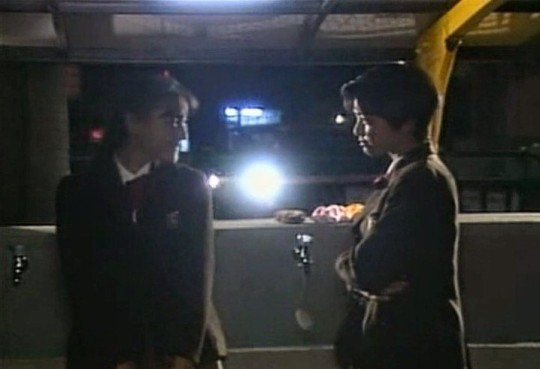
Sono Heart, as it’s nicknamed, starts off as a typical heteronormative high school romance: bumbling protagonist Shiina Hiroko (Isshiki Sae) is desperate to get closer to her crush Katase Masato (Kimura Takuya), star of the school basketball team and all-round nice dude. However, a spanner in the works comes slouching along in the form of female classmate Aso Saki (Uchida Yuki, in her debut role), a mischievous, short-haired personification of trouble who Katase turns out to have feelings for. One day, Hiroko gets into a fight with Saki, and they end up having to stay together after school as punishment. But that afternoon gives them the opportunity to bond over a heart-to-heart conversation, and things seem to improve… until, just before leaving, Saki kisses Hiroko. And then everything changes.
Or rather, everything changes eventually. What’s great about this show is that it doesn’t take shortcuts: Hiroko doesn’t instantly fall in love with Saki. Instead, what you get is a surprisingly layered portrait of a high school girl whose coming to terms with queerness is merely a natural extension of reckoning with her burgeoning sexuality. And, because Saki is self-destructive in her depression and makes a game of belittling, worrying, and infuriating anyone who cares about her, it’s really a story about what it means to love another person rather than a romantic ideal. A word of warning, though: Katase is actually quite a large character, as he and Hiroko end up becoming friends. Also, the ending is very abrupt and inconclusive, though rest assured that it doesn’t try to roll back Hiroko’s feelings, or pair either girl off with a guy.
(CW: self-harm, attempted suicide, bullying, homophobia, underage drinking)
7. Chaser Game W: Power Harassment Boss Is My Ex-Girlfriend / チェイサーゲームW: パワハラ上司は私の元カノ (10? 30-minute episodes, 2024) (canon) - MyDramaList | AsianWiki
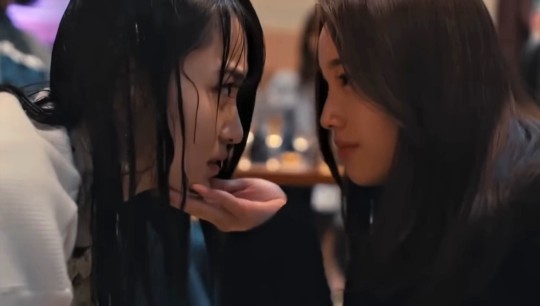
Probably jumping the gun here as only two episodes have aired as of writing, but I feel honour-bound to recommend this as it’d probably appeal to a lot of people, if only they knew about it! Chaser Game W is a standalone spin-off of Chaser Game, itself an adaptation of a manga of the same name by Matsuyama Hiroshi and Matsushima Yukitarou, but you don’t need to know anything going in.
Protagonist Harumoto Itsuki (former Keyakizaka46 captain Sugai Yuuka) has been assigned a new job: her company has been asked by a Chinese conglomerate to develop a game adaptation of a GL manhua, and she’s been tapped as the project leader. However, what appears to be an exciting prospect soon becomes a terrifying one, as the person sent by the client to supervise turns out to be her ex-girlfriend from university (Lin Dongyu, played by Japanese actress Nakamura Yurika), who is now married to a Chinese man (played by a Japanese actor) and has a child, but remains hell-bent on exacting revenge on Itsuki for their bad breakup. This is a romantic (melo)drama rather than a psychological thriller, though, so you won’t be watching Itsuki getting terrorised the entire time. While she is understandably upset by her ex’s current behaviour, Itsuki can’t forget about their happy days together, and Dongyu herself veers between being a sneering bully and craving Itsuki’s affection.
Do note that the show isn’t without its flaws: it’s very Japanese about the Chinese thing, which is to say it’s filled with comments which range from somewhat offensive to borderline racist, and the script will probably give you a headache if you know even the slightest thing about game development. Your mileage might vary on the ex too, as she can be really quite nasty to Itsuki and her teammates. But if you can overlook those issues, this is a rare prize indeed: a TV drama focusing on a canonical F/F pair, who are specifically exes, and in a workplace setting.
(CW: bullying)
8. Doctor X / ドクターX (7 seasons and counting, 2012~) (subtext) - MyDramaList | AsianWiki

To be very honest, I was in two minds about including Doctor X on this list. It is, with a few notable exceptions, misogynistic and reductive in its depictions of women (especially in the first two seasons), gives too much screentime to objectively awful and subjectively annoying men, doesn’t respect the work done by medical personnel apart from surgeons, and on the technical front is formulaic, repetitive, and often lazy in its writing and presentation. Unfortunately, the dynamic between the genius surgeon protagonist Daimon Michiko (Yonekura Ryoko) and her anaesthesiologist wife partner friend Jounouchi Hiromi (Uchida Yuki) is almost unparalleled in its excellence.
The premise of the series is basic indeed: Daimon Michiko is a freelance surgeon with a healthy disrespect of rules and authority and, unluckily for her detractors, a cast-iron guarantee that she will succeed in any surgery, no matter how difficult. She’s initially portrayed as a lone wolf who’s dismissive of the entire hospital system and anyone who’s part of it— but her interest is piqued by the anaesthesiologist Jounouchi, who is skilled beyond her peers and chafes against the idiocy of her colleagues. For all its flaws, the first season – which is more serious and edgy in tone compared to the others, and isn’t an ensemble cast like the post-S3 seasons – is a fantastic depiction of two people being perfectly matched in skill, intellect, and outlook, and how they come together despite one being standoffish (Jounouchi) and the other not being used to reaching out to or even respecting other people (Daimon).
The seasons after that sadly ditch the emphasis on Jounouchi being Daimon’s professional equal, but in exchange offer up another rare and unexpected gift: two women in their late thirties / early forties who are partners both at work and in private. Jounouchi is Daimon’s designated anaesthesiologist, assisting with nearly every surgery, and she spends so much time at Daimon’s agency-office-slash-house you’d think she’d moved in. Also, after a point they just start being wonderfully dorky and comfortable with each other, while still being consummate professionals in the operating theatre. Although the show is very much focused on Daimon Michiko as its sole protagonist, Jounouchi is undoubtedly the character most significant to her – even more than Daimon’s father figure, the head of the freelance agency – and this is highlighted in the story from time to time. They are very, very good. I just wish the series was better.
Note: If you’re curious, I would recommend watching the very first episode in full– by the end you should know if you’re invested enough to continue, otherwise drop it and live in the happy knowledge that you dodged a bullet. If you aren’t so lucky, I’d advise skipping the surgery segments when they start to bore, and in general to skip liberally. Also, season 4 is not worth watching as a whole, except for the last two episodes, which absolutely should not be missed. Sigh. I can’t speak to seasons 6 and 7, due to having paused mid-S6.
Side note: If you’ve watched Doctor X already and liked it (or at least like Daimon and Jounouchi), but haven’t tried Miss Sherlock yet, definitely give that a go because there seems to be a big overlap in the fandoms. Maybe it’s because they both feature a genius protagonist, have the two largest female characters being work partners, and domestic vibes…?
(CW: sexism, genre-typical gore)
Bonus: SKY Castle / SKY 캐슬 (20 episodes, 2018) (subtext) - MyDramaList | AsianWiki

(Note: slight spoilers for the early episodes, but it’s necessary in order to give a more accurate recommendation regarding the F/F subtext, especially as the show is not primarily focused on any one relationship.)
This one’s a bonus because unlike the others on this list, there’s no close relationship between two female characters which could be interpreted in a romantic light. That’s not too surprising as the show is all about the women of a several super-wealthy families trying to get their children into the top Korean universities (equivalent to the Ivy League) whilst supporting their husbands in the rat race: a decidedly heteronormative premise, albeit one that’s executed in an award-winning manner.
So why am I listing it? Well, it’s because somehow, in this series about heteronormative and highly gendered nuclear families, it features possibly the most erotically-charged dynamic I have seen, even taking season 1 of Killing Eve into account. (Though it takes some time to get there, so if you try it out, please watch at least the first four episodes before making a decision!)
That honour goes to the problematic gem that is the relationship between the main character Han Seo-jin (Yum Jung-ah), who is willing to do whatever it takes to get her daughter into Seoul’s top medical school, and star tutor Kim Joo-young (Kim Seo-hyung), who is known for her 100% success rate. It starts off with a mild push-and-pull, when Han Seo-jin wants Coach Kim to take on her daughter, but is wary of the shady rumours surrounding her; the tutor stands firm, and Han eventually has to swallow her pride and accept the risks. Where it really comes into its own, though, is when Coach Kim starts to pose a legitimate threat to everything Han cares for: her daughter, her marriage (or rather, what her husband can give her), her position in the world. It becomes increasingly clear that Han should just walk away, and indeed she tries to do so many a time, only to bend in the end because the coach is key to fulfilling her dearest wish– and so to Han, for all she rages and resents and fears, Coach Kim is nothing less than temptation itself. This is the beating core of the show, and even as the plotting disintegrates and falls into melodrama in the second half, their scenes together still crackle with delicious tension every time. Watch it.
(CW: suicide, psychological abuse, child abuse, bullying, murder)
#kdrama#jdrama#sapphic#lesbian#gay#wlw#yuri#gl series#wlw series#she loves to cook and she loves to eat#tsukutabe#chaser game w#sky castle#doctor x#miss sherlock#night light#tokusatsu gagaga#painter of the wind#sono heart#list#wlw recommendations
490 notes
·
View notes
Text

Maison Margiela f/w 2008 rtw
Creative Director Martin Margiela
Newest Cool
#newestcool#newest cool#ready to wear#runway collection#fw2008#fw08#fw 2008#fw 08#fall/winter 2008#maison martin margiela#Martin margiela#maison margiela#vintage margiela#margiela archive#margiela boots#margiela shoes#margiela tabi#tabi shoes#tabi#tabi boots#antwerp 6#antwerp six#belgian fashion#belgian fashion designer#ready to wear collection#runway details#runway style#runway looks#runway shoes
590 notes
·
View notes
Text
Spencer Reid A-Z Masterlist
these are written as a story with each letter being a new chapter. I recommend reading in chronological order for story purposes, but these could also work as one shots.
I’ve put them in a timeline and they are further categorized by emojis
key:
🧸- fluff
🔥- smut
❤️🩹- angst
🕰️- coming soon
2008
january
you join the BAU (age 24)
july
a is for About Time 🧸
b is for Boy Genius? 🧸
august
c is for Case by Case 🧸
d is for Diana🧸
september
e is for Even Guys Like Me? 🧸❤️🩹
f is for First Date 🧸
october
g is for Girlfriend 🧸
Spencer’s 27th Birthday
h is for Hold my Hand 🧸
november
i is for I knew it! 🧸
Henry LaMontagne is born
j is for Just So You Know… 🧸
2009
december
k is for Kissing Isn’t Enough 🔥
l is for Lover Boy 🕰️
m is for Merry Christmas 🕰️
january
n is for New Years 🕰️
1 year at the BAU
o is for Ours 🕰️
february
p is for Pretty Boy 🕰️
q is for Quiet 🕰️
march
r is for Really? 🕰️
s is for Sitter 🕰️
april
t is for Two Time 🕰️
u is for
may
v is for
w is for
june
x is for
y is for
july
z is for
#spencer reid#spencer reid fluff#spencer reid x y/n#spencer reid x fem!reader#spencer reid x reader#spencer reid imagine#spencer reid fanfiction#spencer reid x bau!reader#spencer reid x you#spencer reid fic#criminal minds#criminal minds fanfiction#criminal minds x reader#spencer reid smut#spencer reid x y/n smut#spencer x reader#criminal minds fanfic#criminal minds smut
569 notes
·
View notes
Text
Herbalism book reccomendations 📚🌿
General herbalism:
The Herbal Medicine-Maker's Handbook by Green J. (2011)
20,000 Secrets of Tea: The Most Effective Ways to Benefit from Nature's Healing Herbs by Zak V. (1999)
The Modern Herbal Dispensatory: A Medicine-Making Guid by Easly T. (2016)
A-Z Guide to Drug-Herb-Vitamin Interactions by Gaby A.R.
American Herbal Products Association's Botanical Safety Handbook (2013)
Medical Herbalism: The Science and Practice of Herbal Medicine by Hoffman D. (2003)
Herbal Medicine for Beginners: Your Guide to Healing Common Ailments with 35 Medicinal Herbs by Swift K & Midura R (2018)
Today's Herbal Health: The Essential Reference Guide by Tenney L. (1983)
Today's Herbal Health for Women: The Modern Woman's Natural Health Guide by Tenney L (1996)
Today's Herbal Health for Children: A Comprehensive Guide to Understanding Nutrition and Herbal Medicine for Children by Tenney L. (1996)
For my black folks!!!
African Medicine: A Complete Guide to Yoruba Healing Science and African Herbal Remedies by Sawandi T.M. (2017)
Handbook of African Medicinal Plants by Iwu M.M. (1993)
Working The Roots: Over 400 Years of Traditional African American Healing by Lee M.E. (2017)
Hoodoo Medicine: Gullah Herbal Remedies by Mitchell F. (2011)
African American Slave Medicine: Herbal and non-Herbal Treatments by Covey H.C. (2008)
The Art & Practice of Spiritual Herbalism: Transform, Heal, and Remember with the Power of Plants and Ancestral Medicine by Rose K.M. (2022)
Indigenous authors & perspectives!!
Braiding Sweetgrass: Indigenous Wisdom, Scientific Knowledge and the Teachings of Plants by Kimmerer R.W. (2015)
Gathering moss by Kimmerer R.W. (2003)
The Plants Have So Much To Give All We Have To Do Is Ask by Siisip Geniusz M. (2005)
Our Knowledge Is Not Primitive: Decolonizing Botanical Anishinaabe Teachings by Djinn Geniusz W. (2009)
Ancient Pathways, Ancestral Knowledge: ethnobotany and ecological wisdom of indigenous peoples of northwestern North America by Turner N. (2014)
A Taste of Heritage: Crow Indian Recipes and Herbal Medicines by Hogan Snell A. (2006)
Medicines to Help Us by Belcourt C. (2007)
After the First Full Moon in April: A Sourcebook of Herbal Medicine from a California Indian Elder by Grant Peters J. (2010)
Latin american herbalism works!!
Earth Medicines: Ancestral Wisdom, Healing Recipes, and Wellness Rituals from a Curandera by Cocotzin Ruiz F. (2021)
Hierbas y plantas curativas by Chiti J.F. (2015)
Del cuerpo a las raíces by San Martín P.P., Cheuquelaf I. & Cerpa C. (2011)
Manual introductorio a la Ginecología Natural by San Martín P.P.
🌿This is what I have for now but I’ll update the post as I find and read new works, so keep coming if you wanna check for updates. Thank you for reading 🌿
#herbalism#herbal medicine#herbal health#green witch#green witchcraft#green magic#herbal magic#herbal witch#herbal witchcraft#plant medicine#plant magic#plant witch#folk healer#healing witch#healing magic#curanderismo#yerbera#curandera#rootwork#rootworker
2K notes
·
View notes
Text

*₊° ❀°。
blugirl f/w 2008
#blugirl#coquette#dollette#fashion#fashion inspo#lana del rey#pink#ribbons and bows#runway#december#winter#winter fashion#pink winter#christmas
119 notes
·
View notes
Note
submissive tom 2008????!!!!!
he tries to make you jealous 🥰🥰
and when you two get home you literally torture him(not technically) like you DON'T let him cum and you use some toys whatever stuff on him ESPECIALLY HANDCUFFS.
pleeeeeaaseee if you're not comfortable its good
THE WAY I GASPED WHEN I READ THIS???? laughs evily and starts typing a story
⯌ "Please.."
-- 2008 Tom Kaulitz x Reader.
⯌ Content : SMUTTTT, Sub!Tom Kauliz, Dom!Reader 😛.
a/n : first of all I js wanna say I DEEPLY apologize for leaving u guys omg I feel like a bad mother leaving her starved children. I came back w a large feast tho so eat this UP!!! (im sorry for leaving this on a cliffhanger) also not proofread thank u and goodbye


boy oh boy am i gonna have fun with this rubs hands together
You were dating Tom for awhile now, and you knew that he flirts with fans sometimes. It didn't annoy you, he knew he had you. But this exact moment stood out.
Tom was signing autographs for fans as usual, when a fan started talking to him. His eyes sparkled slightly as he also started talking to the fan. "You're really pretty." Tom said softly, smiling a little. He knew you were watching. He just wanted your attention.
You were watching from afar, rolling your eyes. You scoffed and waited for the thing to be over. You were definitely jealous, and you were gonna get him back.
After he was done, he walked up to you when you glared at him. "Am I in trouble?" He said, looking at you. He knew he got you jealous.
You scoffed and grabbed his arm, dragging him. He chuckled softly, watching you drag him.
────────────────────────
Once you got home, you slammed the door behind you, kicking your shoes off and dragging Tom up the stairs. You got into the bedroom and slammed the door behind you.
You pushed him against the bed, giving him a rough kiss as you sat on top of him. Tom whimpered slightly as you pulled away. "Y/n.." He mumbled, looking up at you as you sat on top of him. You felt his cock pressing against your cunt as you sat on top of him.
"What? You need me?" You looked down at him, your hips slowly grinding on him. His breath hitched and he let out a small moan. "Y-y/n, please.." He whimpered, looking at you as you slowly grind your hips on his hard cock.
"Please, oh fuckk.." He pleaded, moaning softly. You got off and he whined, looking down at you. "Quiet." You said as you started pulling his jeans down. Tom bit his bottom lip as he watched you.
You pulled down his pants in boxers in one swift motion, his cock springing out as precum leaked from the tip. "Y/n, please..." He pleaded, looking down at you. You hummed and rubbed your thumb on his tip. He moaned slightly and bucked his hips a little. You slapped his thigh. "Stay still." You ordered.
He whimpered as he felt your warm mouth around his cock, throwing his head back. "Oh, fuck- y/n.." He moaned softly, looking down at you as you sucked so good on his cock. He whimpered as he felt his climax coming. "F-fuck, p-please y/n, I'm cumming," He whimpered when you took his cock out of your mouth with a pop sound. He whined and you shook your head.
"Do you think you deserve to cum? After talking to some girl thinking you can get away with it?" You said, stroking his cock slowly. He moaned and threw his head back. "P-please!, mmh-" He managed to make out between moans. You just shook your head and continued to stroke his cock slowly. "No, Tom. Learn your lesson." You tilted your head slightly, looking up at him.

how i feel after finishing this (i feel so good rn)
124 notes
·
View notes
Text

rodarte, f/w 2008-9 in fashion is... - the metropolitan museum of art (2014)
90 notes
·
View notes
Text
[T]hey frequently transgress the spatial boundaries imposed by humans to organize and govern spaces […]. [W]etlands spread out and do not conform to the straight and consistent lines between land and water. […] The smells of wetlands, of decomposing vegetation, of sulphur, were […] off-putting for [British] settlers in Aotearoa […]. Soon after the British-led military invasion of the Waikato region in 1863 and the confiscation of 480 000 ha of Maori lands, [...] [t]he ‘great swamp region of the Waikato’ was described as a picture of ‘desolation’ and ‘stagnant water’ where the ‘ground quaked and quivered beneath’ one's feet, and opened up unexpectedly to suck people down into ‘horrible depths of [the] black, stinking bog’. […] The omnipresent dangers of ‘damp vapour arising’ were deemed ‘highly prejudicial to residents’ health throughout Aotearoa. […] The ‘tepid swamps’, it was reported, poisoned the ‘otherwise pure air’ […].’ The Napier Swamp Nuisance Act enabled local government officials to ‘fill in’ (meaning to drain, establish levees, and build up the soil) any parcel of land deemed a muddy watery odorous ‘nuisance’ without the consent of the landowners. […] [P]oliticians suggested [that Aotearoa] be decontaminated through strategic interventions to remove and remake wetlands […]. Such ideas, which fused medical and socio-economic theories, justified indigenous dispossession and drainage works […].
Text by: Meg Parsons and Karen Fisher. “Historical smellscapes in Aotearoa New Zealand: Intersections between colonial knowledges of smell, race, and wetlands.” Journal of Historical Geography Volume 74, pages 28-43. October 2021.
---
On 24 December 1928 Italy’s fascist regime launched […] a fourteen-year national land reclamation programme aimed at [...] Italy's ‘death inducing’ swamps […]. The Pontine Marshes, a marshland spreading across 75,000 hectares south of Rome was given top priority […]. [T]he fascist regime used an extensive propaganda machinery to promote the programme […] as a heroic quest for producing an 'ideal' [...] landscape [...]. Newsreels documented step by step the struggle […], with Mussolini himself often featuring, overseeing the project, or even working the land. […] Nearly 3,000 newsreels and many documentaries were produced [...]. This was [...] [among] Italy's most important public works project[s] [...], a transformative enterprise that [...] would engage with an "untamed" natural environment and [force] it into a sanitised version of ideal fascist nature. [...] [The marshes] were linked to the idea of wilderness, [...] undisciplined, uncivilised, and unproductive [...]. This policy […] aimed […] [at] removing “unhealthy” [...] areas, through the process of sventramento (disembowelment). […] The construction of New Towns [...] in the Pontine Marshes [...] aimed at producing the 'ideal' settlement [...]. [These newly constructed] municipal buildings often boasted prominent towers [....] reigning supreme over the Marshes [...].
Text by: Federico Caprotti and Maria Kaika. “Producing the ideal fascist landscape: nature, materiality and the cinematic representation of land reclamation in the Pontine Marshes.” Social & Cultural Geography Volume 9. 2008.
---
[I]n Recife in the Northeast of Brazil [...] the transformation of the city was predicated on [...] [a] notion of whiteness that required the enclosure of wet, amphibious space to make dry land. [...] Racialised groups – of black, indigenous, and mixed heritages – and the houses, marshlands, and mangroves where they lived, were subject to eradication [...]. [F]rom the 1920s to 1950s, during the rise to hegemony in Brazil of [a form of eugenicist, modernist nationalism,] [...] [the] idea's heartland [was] the Northeast. [...] Recife is also a centre of Brazilian black culture [...]. One of the key sites in Brazil's slave and sugar trades [...], the city was [...] [a] hub. Many of these people lived in what came to be called mocambos, a word that designated an informal dwelling, but came to mean much more. [...]. Mocambos were seen as [...] the place where exploited labour was kept out of sight. [...] They were also [...] the inheritance [...] of the quilombo - the community of escaped slaves. [...] In July 1939, the proto-fascist administration [...] of Agamenon Magalhães, put in place by Getúlio Vargas' repressive Estado Novo, launched the Liga Social Contra o Mocambo (Social League Against the Mocambo, LSCM). The League emerged out of a tellingly named “Crusade” against the mocambos. [...] Mocambos were characterised as repellent, unhygienic, and dangerous: “the mocambo which repels. The mocambo which is the tomb of a race … a sombre landscape of human misery … which mutilates human energy and annuls work" [...]. These were the decades of the embranquecimento of the Brazilian population through public policies of immigration, miscegenation, and sterilisation [...]. This white supremacist ideology was inseparably a politics of nature. Magalhães wrote [in 1939]: The idle life, the life that the income of the mocambos provides [...]. It is a life of stagnant water. … [that] generates in its breast the venom of larvae, which are the enemies of life. Enemies of life, as are the mocambos and the sub-soil of cities, where the polluted waters contaminate pure waters [...]. Attempts to “cleanse” the city functioned through a distinct process: aterramento, the making of land. [...] Or as 1990s mangue beat [mangrove beat] musicians [...] put it, “the fastest way also to obstruct and evacuate the soul of a city like Recife is to kill its rivers and fill up its estuaries” [...].
Text by: Archie Davies. "The racial division of nature: Making land in Recife". Transactions of the Institute of British Geographers Volume 46, Issue 2, pp. 270-283. First published 29 November 2020.
64 notes
·
View notes
Text

Blumarine - F/W 2008
56 notes
·
View notes
Text
Bibliografia
A. Colella, L’esodo dalle terre adriatiche – Rilevazioni statistiche, Opera per l’Assistenza ai Profughi Giuliani e Dalmati, 1958
A. Santin, Al tramonto. Ricordi autobiografici di un vescovo, 1978
L. Vivoda, L’esodo da Pola - agonia e morte di una città italiana, Nuova LitoEffe, 1989
S. Cella, La liberazione negata. L’azione del Comitato di Liberazione Nazionale dell’Istria, Tipografia Del Bianco, 1990
R. Pupo, Venezia Giulia 1945. Immagini e problemi, Editrice Goriziana, 1992
S. Cella, Dal plebiscito negato all’esodo, ANVGD Gorizia, 1993
G. Perselli, I Censimenti della popolazione dell’Istria, con Fiume e Trieste, e di alcune città della Dalmazia tra il 1850 e il 1936, 1993
E. Bettiza, Esilio, Mondadori, 1996
R. Pupo, Violenza politica tra guerra e dopoguerra: foibe, deportazioni ed esodo delle popolazioni istriane e dalmate (1943-1956), in «Annali/Museo storico italiano della guerra», 1997
N. Milani, A. M. Mori, Bora. Istria, il vento dell’esilio, Marsilio, 1998
G. Nemec, Un paese perfetto. Storia e memoria di una comunità in esilio: Grisignana d’Istria (1930-1960), LEG Edizioni, 1998
F. Rocchi, L’esodo dei 350mila Giuliani Fiumani e Dalmati, Difesa Adriatica, 1998
F. Salimbeni, Le foibe, un problema storico, Unione degli Istriani, 1998
L. Vivoda, Campo profughi giuliani Caserma Ugo Botti, Istria Europa, 1998
N. Luxardo, Dietro gli scogli di Zara, Editrice Goriziana, 1999
A. Petacco, L’esodo, Mondadori, 1999
R. Spazzali, Epurazione di frontiera: le ambigue sanzioni contro il fascismo nella Venezia Giulia 1945-1948, LEG Edizioni, 2000
G. Rumici, Fratelli d’Istria: 1945-2000, italiani divisi, Ugo Mursia, 2001
M. Brugna, Memoria negata. Crescere in un centro raccolta profughi per esuli giuliani, Condaghes, 2002
G. Oliva, Foibe. Le stragi negate degli italiani della Venezia Giulia e dell’Istria, Mondadori, 2002
G. Rumici, Infoibati (1943-1945): i nomi, i luoghi, i testimoni, i documenti, Ugo Mursia, 2002
R. Pupo, R. Spazzali, Foibe, Mondadori, 2003
R. Marsetič, I bombardamenti alleati su Pola 1944-1945, 2004
E. Ratzenberger, Via Volta 2. Un’infanzia a Fiume, Edizioni Biografiche, 2005
G. Crainz, Il dolore e l’esilio. L’Istria e le memorie divise d’Europa, Donzelli, 2005
E. Miletto, Con il mare negli occhi. Storia, luoghi e memorie dell’esodo istriano a Torino, Franco Angeli, 2005
G. Paiano, La memoria degli Italiani di Buie d’Istria, 2005
M. Cattaruzza, L’Italia e il confine orientale, Il Mulino, 2007
L. Giuricin, La memoria di Goli Otok - Isola Calva, 2007
E. Miletto, Istria allo specchio. Storia e voci di una terra di confine, Franco Angeli, 2007
E. Rover, Cronache istriane di un esule, L. G. Ambrosini & C. Tipografia Editrice, 2008
G. Rumici, O. Mileta Mattiuz, Chiudere il cerchio. Memorie giuliano-dalmate. Primo volume: dall’inizio del Novecento al Secondo conflitto mondiale, ANVGD Gorizia - Mailing List HISTRIA, 2008
P. Sardos Albertini, Il rumore del silenzio:
la storia dimenticata dell’Adriatico orientale, 2008
S. Tazzer, Tito e i rimasti. La difesa dell’identità italiana in Istria, Fiume e Dalmazia, Libreria Editrice Goriziana, 2008
R. Turcinovich Giuricin, La giustizia secondo Maria. Pola 1947: la donna che sparò al generale brigadiere Robert W. De Winton, Del Bianco Editore, 2008
L. Vivoda, Quel lungo viaggio verso l’esilio, Istria Europa, 2008
G. Rumici, M. Cuzzi, R. Spazzali, Istria, Quarnero, Dalmazia: storia di una regione contesa dal 1796 alla fine del XX secolo, LEG Edizioni, 2009
E. Miletto, Arrivare da lontano. L’esodo istriano, fiumano e dalmata nel biellese, nel Vercellese e in Valsesia, Istituto per la storia della Resistenza e della società contemporanea nelle province di Biella e Vercelli “Cino Moscatelli”, 2010
G. Rumici, O. Mileta Mattiuz, Chiudere il cerchio. Memorie giuliano-dalmate. Secondo volume: il Secondo conflitto mondiale, ANVGD Gorizia - Mailing List HISTRIA, 2010
G. Oliva, Esuli. Dalle foibe ai campi profughi: la tragedia degli italiani di Istria, Fiume, Dalmazia, Mondadori, 2011
G. Nemec, Nascita di una minoranza. Istria 1947-1965: storia e memoria degli italiani rimasti nell’area istro-quarnerina, 2012
G. Rumici, O. Mileta Mattiuz, Chiudere il cerchio. Memorie giuliano-dalmate. Terzo volume: L’immediato dopoguerra, ANVGD Gorizia - Mailing List HISTRIA, 2012
L. Vivoda, In Istria prima dell’Esodo. Autobiografia di un esule da Pola, Istria Europa, 2012
V. Facchinetti, Protagonisti senza protagonismo. La storia nella memoria di giuliani, istriani, fiumani e dalmati nel mondo, La Mongolfiera, 2014
V. Petaros Jeromela, 11 luglio 1920: l’incidente di Spalato e le scelte politico-militari, 2014
R. Turcinovich Giuricin, … e dopo semo andadi via, Edizioni Laguna – ANVGD Gorizia, 2014
F. Molinari, Istria contesa. La guerra, le foibe, l’esodo, Ugo Mursia, 2015
G. Nemec, Dopo venuti a Trieste. Storie di esuli giuliano-dalmati attraverso un manicomio di confine 1945-1970, Alpha & Beta, 2015
A. Cuk, Cuori senza frontiere: il cinema del confine orientale, 2016
E. Varutti, Italiani d’Istria, Fiume e Dalmazia esuli in Friuli 1943-1960, 2017
O. Moscarda Oblak, Il “Potere Popolare” in Istria. 1945-1953, 2017
A. Cuk, La città dolente, Alcione Editore, 2020
R. Turcinovich Giuricin, R. Poletti, Tutto ciò che vidi. Parla Maria Pasquinelli. 1943-1945 fosse comuni, foibe, mare, Oltre Edizioni, 2020
R. Pupo, Adriatico amarissimo. Una lunga storia di violenza, Laterza, 2021
G. La Perna, Pola Istria Fiume 1943-1945. L’agonia di un lembo d’Italia e la tragedia delle foibe, Ugo Mursia, 2022
R. Pupo, Il lungo esodo: Istria : le persecuzioni, le foibe, l’esilio, Rizzoli, 2022
R. Spazzali, Pola. Città perduta. L’agonia, l’esodo (1945-47), Ares, 2022
R. Turcinovich Giuricin, Esuli due volte: dalle proprie case, dalla propria patria, Oltre Edizioni, 2022
E. Dionis Bernobi, Una vita appesa a un filo, 2023
R. Spazzali, Il disonore delle armi: Settembre 1943: l’armistizio e la mancata difesa della frontiera orientale italiana, Ares, 2023
E. Varutti, La patria perduta. Vita quotidiana e testimonianze sul Centro di Raccolta Profughi giuliano-dalmati di Laterina (1946-1963), Aska Edizioni, 2023
Documenti e articoli
Le vittime di nazionalità italiana a Fiume e dintorni (1939-1947) – Zrtve talijanske nacionalnosti u rijeci i okolici (1939-1947)
Mappa ed elenco delle foibe
Grido dell’Istria, n° 20, 21 e 41
Arnaldo Harzarich, l’angelo delle foibe
Documentari, incontri e lezioni
Adriatico amarissimo. La stagione delle fiamme e la stagione delle stragi
Conferenze del giovedì dell’ANVGD di Milano
Da quella volta non l’ho rivista più. Incontro con Raoul Pupo
Esodo. L’Italia dimenticata
Esodo. La memoria tradita
Istria: il ricordo che brucia (1, 2)
Le Foibe
Le foibe, l’esodo e la catastrofe dell’italianità adriatica
Il tempo del ricordo. Le foibe e l’esodo istriano-giuliano-dalmata
Vergarolla
Filmati storici
Martiri italiani. Le foibe del Carso (1946)
L’esodo da Pola. La salma di Nazario Sauro a Venezia (1947)
L’esodo degli italiani da Pola (1947)
Pola addio (1947)
Pola, una città che muore (1947)
Le condizioni dei profughi giuliani accolti a Roma (1948)
Fertilia (1949)
Piccoli profughi giuliani (1951)
A Sappada con i piccoli profughi giuliani (1952)
Siti utili
Archivio de L’Arena di Pola
Associazione Dalmati Italiani nel Mondo – Libero Comune di Zara in Esilio
Associazione delle Comunità Istriane
Associazione Fiumani Italiani nel Mondo – Libero Comune di Fiume in Esilio
Associazione Giuliani nel Mondo
Associazione Nazionale Venezia Giulia e Dalmazia
Associazione Nazionale Venezia Giulia e Dalmazia – Comitato Provinciale di Bologna
Associazione Nazionale Venezia Giulia e Dalmazia – Comitato Provinciale di Udine
Associazione Nazionale Venezia Giulia e Dalmazia – Comitato Provinciale di Venezia
Associazione Triestini e Goriziani in Roma
Centro di Documentazione Multimediale della Cultura Giuliana, Istriana, Fiumana e Dalmata
Centro di ricerche storiche Rovigno
Circolo di Cultura Istroveneta “Istria”
Comitato 10 Febbraio
Comunità di Lussinpiccolo
Coordinamento Adriatico
Deputazione di Storia Patria
Elio Varutti
FederEsuli
Fondazione Giorgio Perlasca – Le Foibe e l’Esodo
Fondazione Rustia-Traine
Istituto Regionale per la Cultura Istriano-fiumano-dalmata
L’Arena di Pola – Libero Comune di Pola in Esilio
Lega Nazionale
Mailing List Histria
Società Dalmata di Storia Patria
Società di Studi Fiumani
Unione degli Istriani – Libera Provincia dell’Istria in Esilio
Unione Italiana
Università Popolare di Trieste
Romanzi d’autori istro-quarnerini e dalmati
P. A. Quarantotti Gambini, La rosa rossa (1937)
E. Bettiza, Il fantasma di Trieste (1958)
F. Tomizza, Materada (1960)
F. Tomizza, La ragazza di Petrovia (1963)
F. Tomizza, Il bosco di acacie (1963)
P. A. Quarantotti Gambini, I giochi di Norma (1964)
P. A. Quarantotti Gambini, Le redini bianche (1967)
F. Tomizza, L’albero dei sogni (1969)
F. Tomizza, La torre capovolta (1971)
F. Tomizza, La quinta stagione (1975)
F. Tomizza, La miglior vita (1977)
F. Tomizza, Il male viene dal Nord (1984)
L. Zanini, Martin Muma (1990)
N. Milani, Una valigia di cartone (1991)
E. Bettiza, Esilio (1996)
M. Madieri, Verde acqua. La Radura (1998)
G. Fiorentin, Chi ha paura dell’uomo nero? (2000)
F. Tomizza, La visitatrice (2000)
F. Tomizza, Il sogno dalmata (2001)
E. Bettiza, Il libro perduto (2005)
F. Molinari, L’isola del Muto. Storia del pescatore dalmata che parlava ai gabbiani (2006)
A. M. Mori, Nata in Istria (2006)
N. Milani, Racconti di guerra (2008)
L. Toth, La casa di calle San Zorzi (2008)
L. Zanini, Martin Muma (2008)
R. Turcinovich Giuricin, S. De Franceschi, Una raffica all’improvviso, navigando lungo le coste dell’Istria e Quarnero (2011)
L. Toth, Spiridione Lascarich – Alfiere della Serenissima (2011)
A. M. Mori, L’anima altrove (2012)
E. Bettiza, La distrazione (2013)
N. Milani, La bacchetta del direttore (2013)
N. Milani, Lo spiraglio (2017)
L. Toth, Il disertore dalmata (2018)
N. Milani, Di sole, di vento e di mare (2019)
N. Milani, Cronaca delle Baracche (2021)
E. Mestrovich, A Fiume, un’estate (2022)
R. Turcinovich Giuricin, Di questo mar che è il mondo… (2023)
Pellicole cinematografiche e spettacoli teatrali
La città dolente (1949)
Cuori senza frontiere (1950)
Magazzino 18 (2013)
Red Land Rosso Istria (2018)
La rosa dell’Istria (2024)
#Esodo giuliano-dalmata#Giorno del ricordo#*Nella bibliografia ho incluso solamente le opere dedicate a foibe ed esodo (+ Spalato tanto per) ma c’è una bibliografia ricca anche sulla#slavizzazione asburgica di Venezia Giulia e Dalmazia Risorgimento e Fascismo (snazionalizzazione delle componenti slave; violenze squadrist#e non solo; invasione della Jugoslavia e campi di concentramento fascisti) che ovviamente non metto qui perché se parlo di foibe ed esodo m#fermo lì - però per chi non avesse familiarità con l’argomento e volesse avere una visione più ampia e completa della storia di quelle#regioni me lo scriva e provvederò.
29 notes
·
View notes
Photo

Yohji Yamamoto f/w 2008 rtw
Creative Director Yohji Yamamoto
Newest Cool on Instagram
#Yohji yamamoto#yamamoto#fw2008#fw 2008#fw08#fw 08#ready to wear#prêtàporter#prêt à porter#newest cool#newestcool#modest high fashion#Japanese design#Japanese fashion#Japanese fashion designer#runway details#runway collection#runway model#fall/winter#fall/winter 2008#2000s fashion#2000s runway#black fashion
1K notes
·
View notes
Text
Round 1


Propaganda Under Cut
Mai
she’s constantly pushed aside for the zuko/sokka ship :/ like i’m not a fan of mai/zuko but they always forget her or make her a wingwoman or make her a villain.
She's a very interesting character who had the misfortune of being the love interest of the series' most popular character, Zuko, which immediately made her public enemy No. 1 in certain parts of the fandom. Tbh I think she's more a victim of zutara (an m/f ship) than zukka (m/m) but zukka also screwed her over so it counts. She's at best sidelined and at worst demonized. There's a whole section of the fandom who'll swear up and down she's abusive for telling Zuko to deal with his mental health issues himself. There's whole essays on it and I'm not exaggerating.
tell me WHY people think she's abusive just because she?? got mad at zuko?? when zuko was being a horrible boyfriend to begin with?? because theyre both teenagers and they were literally Acting Like Teenagers?? anyway no more mai hate the world has moved past the need for mai hate
Elizabeth Midford
She started as just a cutie fiancée trying her best, turns out she's also a swordfighting genius, very under pressure to perform feminity in the Victorian Rose type of way. Fandom crucifies her bc she's Ciel's fiancée and they want him to be with his butler, Sebastian, the demon he sold his soul to for revenge
anime was a shitty canon divergent adaptation that butchered her character down to her "cutesy silly girly" persona, which obviously made the 2008 anime fans hate her with a passion (nothing wrong w being girly I'm just saying the adaptation made her super one dimensional) anyways fujoshis used to treat her as a villain because she's the fiance of Ciel,, who as u might know already was HEAVILY shipped with his butler, Sebastian back then (now it's kinda looked badly upon, nice tbh that ship sucks ass xD) She's a bit similar to Misa Amane from death note in the way she was treated. (Like an obstacle the yaoi ship must overcome rather than a person)
she's my silly little rabbit! i could gush about her character but i'll keep it short and just say that she's really well written and one of the best characters in the series. anyways she's ciel's fiance and she's like, rightfully annoying as any other 13 yr old girl would be but the fanbase fucking crucified her for even existing. she gets demonized for being 'annoying', but then ciel gets yaoishipped with an even more annoying guy. there is 100% an argument that lizzie/ciel is weird bc they're cousins (i personally don't ship it) but that falls flat when her detractors then ship the 13 yr old ciel with an eons old demon who Canonically looks like his father. the anime also never reached her main character development until years after its peak and that was only in a movie, so she really got the bad end of the stick here. not me though i had a giant crush on her when i was 12
99 notes
·
View notes
